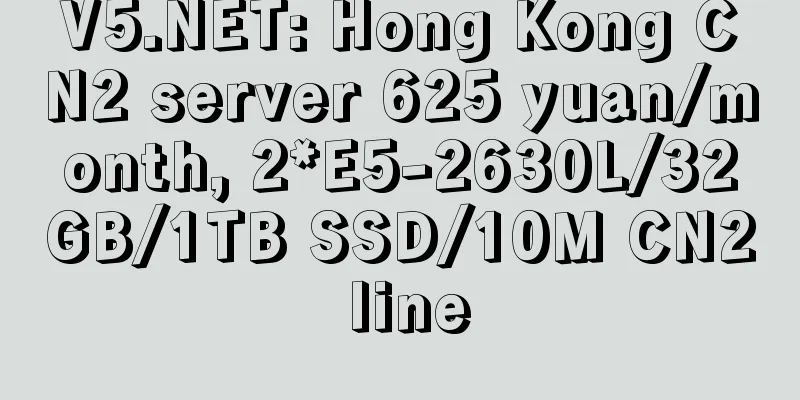Don’t worry anymore! Teach you how to quickly locate Eth-Trunk faults and easily solve network problems!

1. How to locate the problem that an Eth-Trunk in manual load balancing mode cannot go up?When encountering this kind of problem, the editor summarizes the following positioning ideas for everyone, which have been tried and tested:
For the specific positioning steps, please look down: Step 1: Check whether the physical status of the member port is UPThe physical status of the member interfaces must be Up, which is a prerequisite for the normal operation of the Eth-Trunk. Use the display eth-trunk command to check the member interface information of the Eth-Trunk interface. If the member interface is in the Down state under the Eth-Trunk interface, please refer to this article "Ethernet Interface Physical Down Fault Special Topic". Step 2: Check the configuration of the Eth-Trunk interfaceRun the display eth-trunk command to check whether the lower limit of the number of active interfaces is configured on the Eth-Trunk interface. If the number of Up member interfaces on the Eth-Trunk interface is less than the configured lower limit of the number of active interfaces, the Eth-Trunk status changes to Down. In the following command output, Least Active-linknumber indicates that the lower threshold of the member links in the Up state is 3. The number of Up member interfaces on the Eth-Trunk interface is 1. The number of Up member interfaces is less than the lower threshold of the number of active interfaces. Therefore, the Operate status of the Eth-Trunk interface is Down. In addition, please note that by default, the lower limit of the number of active Eth-Trunk interfaces is 1. You can run the least active-linknumber link-number command to configure the lower limit of the number of active interfaces in a link aggregation group. 2. How to locate the failure of Eth-Trunk negotiation in LACP mode?Similarly, the editor also summarizes the positioning ideas of this type of fault:
Step 1: Check whether the physical status of the member port is UPThe physical status of the member interface is Up, which is the prerequisite for being selected by Eth-Trunk. Use the display eth-trunk command to view the member interface information under the Eth-Trunk interface. If the member interface is Down under Eth-Trunk, it is the same as above. Please first eliminate the cause of the interface failure. Step 2: Check the configuration of the Eth-Trunk interfaceCheck whether the configurations on both ends of the Eth-Trunk are equal. Because it involves the negotiation of device LACP packets, both ends need to be configured in LACP mode. Use the display eth-trunk command line to check whether the upper and lower thresholds of the number of active interfaces are configured under the Eth-Trunk. If the number of member interfaces in UP under the Eth-Trunk interface is less than the configured lower threshold of the number of active interfaces, the Eth-Trunk status will change to Down. By default, the lower threshold of the number of active Eth-Trunk interfaces is 1, which can be set using the least active-linknumber _link-number_ command. The upper threshold of the number of active Eth-Trunk interfaces is 8, which can be set using the max active-linknumber _link-number_ command. If the least active-linknumber command has been configured before this command, ensure that the upper threshold configured in this command is greater than or equal to the lower threshold configured in the least active-linknumber command. Step 3: Check whether the LACP packets sent and received by the Eth-Trunk member ports are normalRun the display lacp statistics eth-trunk command line to check whether LACP negotiation packets are sent and received normally on Eth-Trunk member interfaces. The number of packets that increase is related to the packet timeout period configured on the Eth-Trunk interface: The number of packets that increase is related to the packet timeout configured on the Eth-Trunk interface. You can run the lacp timeout { fast | slow } command in the Eth-Trunk interface view to configure the timeout for the Eth-Trunk interface to receive LACP protocol packets in LACP mode.
3. How to locate uneven traffic load balancing on an Eth-Trunk interface?Similarly, the editor also summarizes the positioning ideas of this type of fault:
Step 1: Check whether the packet characteristics match the load balancing methodCheck whether the characteristics of the packets forwarded by the Eth-Trunk interface match the configured load balancing mode. If they do not match, for example, the MAC address of the forwarded packet changes, and the load balancing mode is set to src-ip, load balancing cannot be performed. You can check and modify it by following the steps below: (1) Confirm message characteristics
Note: If the destination MAC address of the message does not exist in the MAC table, the message is an unknown unicast message. (2) Check the load balancing mode of the Eth-Trunk interface. Check the load balancing mode of the Eth-Trunk interface based on the packet forwarding mode (known unicast or unknown unicast) confirmed in the previous step. Check the load balancing mode of known unicast traffic: Run the display eth-trunk command to check the Hash arithmetic field to confirm the configured load balancing mode. You can also run the display this command in the Eth-Trunk interface view to check the configured load balancing mode. Load sharing mode parameter description:
The enhanced load balancing mode has only one template globally, which is effective for both known unicast and unknown unicast packets. Different fields are selected for hash calculation based on different packet types. You can run the display load-balance-profile command to view the load balancing mode for each type of characteristic packets. HashField indicates the configured load balancing mode. For unknown unicast, run the display current-configuration | include unknown-unicast load-balance command to view the load balancing mode for unknown unicast. By default, the device load balances unknown unicast based on the source MAC address and destination MAC address of the packet. (3) Check whether the characteristics of the forwarded packets match the load balancing mode If the message characteristics do not match the current load sharing mode, you can modify the load sharing mode according to the existing network traffic model. The more frequently this parameter changes in the traffic, the more balanced the traffic will be when this load sharing mode is selected. For example: when only a single PC is tested, since the source IP address and source MAC address remain unchanged, only the destination IP address and destination MAC address change, the load sharing mode selected at this time is based on the source IP address or source MAC address, then the traffic cannot be load shared and needs to be modified to a load sharing mode based on the destination IP address or destination MAC address. If the message is a known unicast, the modification command is as follows: If the message is an unknown unicast, modify the command as follows: If the load balancing mode used is enhanced, you need to modify the load balancing mode of the corresponding packet type in the enhanced template according to the packet type (such as IPv4, IPv6, MPLS, L2). For example, modify the load balancing mode of IPv4 packets in the enhanced template "test" to dip. Step 2: Check whether the number of selected member interfaces is an exponential multiple of 2When the number of member ports selected under an Eth-Trunk interface is an exponential multiple of 2, traffic load sharing is more balanced. Run the display eth-trunk command to view the selected member ports. The method to identify the selected member ports under an Eth-Trunk interface is as follows:
Step 3: Check whether there is a stack/cluster inter-chassis Eth-TrunkIf it is an unknown unicast message, this step does not need to be performed. The local priority forwarding function is enabled on the Eth-Trunk interface by default. That is, in a stacking/clustering scenario, if the outbound port of a packet entering from a stacking/clustering member device is an Eth-Trunk, and there is a member port of the Eth-Trunk on the local chassis and the member port is normal, the packet will only be forwarded from the Eth-Trunk member port on the chassis, and will not be forwarded from the Eth-Trunk member ports of other stacking/clustering members. In this case, you can use the following command to disable the local priority forwarding function. The local traffic priority forwarding function is only effective for known unicast packets and is ineffective for broadcast, multicast, and unknown unicast packets. This issue has shared all the troubleshooting tips with you. I believe that you can easily deal with Eth-Trunk faults when you encounter them again. I will share more troubleshooting cases with you in the future. Bye. ~~~ |
<<: Automotive Ethernet: Solving complex wiring harnesses and supporting more data
>>: A “Cat” Walking Alone on a Narrow Road: Cat.1 and Narrowband Communications (Part 2)
Recommend
It's 2021, what is the real experience of IPv6? A programmer tells his personal experience
[[428843]] Since the issuance of the "Action...
Comparison of Category 5/Category 5e/Category 6/Category 6e/Category 7 and other types of network cables
1. The difference between Category 5 and Category...
The overall price of 5G mobile phones fell in January 2021
2020 is a year of rapid development of 5G. The sa...
Configuring 802.1x Remote Authentication
Topology Specification Applicable to all versions...
Wang Chunhui: 5G releases three major functions to drive China on the path of high-quality development
On June 6, 2019, the Ministry of Industry and Inf...
Tested in 6 cities! How fast can 5G uplink with Super Uplink run?
Ever since 5G has entered the homes of ordinary p...
Will 5G be the next disruptive technology?
The telecommunications industry likes to use the ...
Xunlei's total revenue in 2016 was US$157 million, and its cloud computing revenue increased by 230.4% year-on-year
On March 8, Beijing time, Xunlei released its una...
Zheye IO year-end promotion: 30% off all cloud servers + free memory, 200 yuan off for independent servers, 300 yuan free for 1,000 yuan recharge
ZheyeIO has released a 2020 year-end promotion pl...
my country's total 5G base stations account for more than 60% of the world's total
The 2021 Communications Industry Statistical Bull...
Juniper Networks: AI empowers experience first
In the era of the Internet of Everything, with th...
5G has great potential in promoting the development of industrial Internet!
[[412406]] As an industry that deeply integrates ...
5G will revolutionize the Internet of Things, but not soon
5G technology is the most anticipated network upd...
5G+Industrial Internet, how is this addition “calculated”?
On September 17, the Zhongguancun Industrial Inte...
Three "fairy tale" ways to build a data center
There is a very important indicator for evaluatin...









